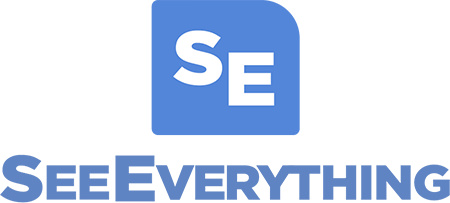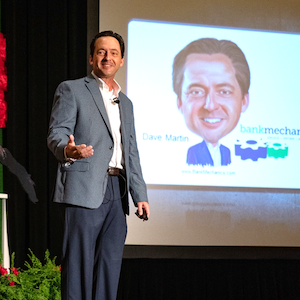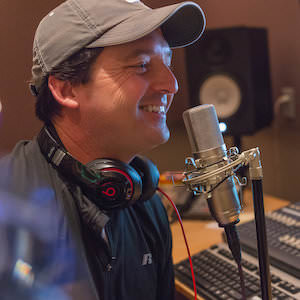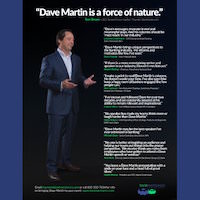 |
 |
We have a strategic plan. It's called doing things. » Herb Kelleher
Can I Quote You on That?
I recently received a phone call from a reporter that put a smile on my face. Only the day before, I read that a bank had announced the closing of its in-store branch program.
I joked with an industry friend that I’d probably get a phone call about whether the sky was falling in 3…2...1.
Sure enough, that call came later in the day. The reporter asked reasonable questions about what the closing of that in-store program said, if anything, about the future of in-store branches.
I kidded, “I’m guessing you’re calling me to refute the ‘end-of-days’ stuff you’re hearing. Okay, put me on record. I refute.”
He chuckled and shared that he’d been hearing vastly different predictions.
Some were sure that in-store locations were more disposed to closings because of (generally) lower deposit levels than most brick-and-mortar locations. I told him that I didn’t agree with that logic, but I understood that some bought into it.
I also explained that I try not to be overly critical of a situation in which I don’t know the whole story. Without knowing details about their particular locations, their strategies, their operations, etc., I tend to give management teams the benefit of the doubt that they’re doing what is best for them.
I do get a kick, however, out of how some folks seem to believe that the closing of an in-store branch (or several) is more a reflection on in-store banking than on individual institutions. Hundreds of institutions, including some of the more efficient and profitable in the industry, run highly successful in-store branches and programs.
That that fact isn’t accepted as prima facie evidence of their viability always puzzles me.
I also pointed out that if in-store branches were only now being rolled out, most analysts would be trumpeting the brilliance of the concept.
Placing small branches with smaller teams of “universal bankers” inside establishments with heavy, recurring traffic would be heralded as a genius approach to addressing the industry’s challenges of remaining “high-touch” while becoming “high-tech.”
As our industry becomes more technology driven and traditional branch traffic continues to decline, the strategic case for in-store branches - and other formats that bring our branches (and best people) to where people shop, work, and play - becomes stronger each day.
Stop the presses!
Taking Service to Heart
I spent an hour sitting in a cardiologist groups’ waiting room last week. I was the chauffer on that trip, not the patient.
There was a large waiting area with loud conversations taking place, but I was sitting within earshot of the receptionists.
The receptionist area was a semi-circle with six separate stations and staff members. Cardiologists are busy in south Louisiana. Go figure.
It became apparent that one receptionist was responsible for checking voice mail and returning patients’ calls. Over the next 30 minutes, I went from eye-rolling annoyance to being pretty impressed with the conversations I had no choice but to be privy to.
I was initially annoyed by hearing some form of the same conversation over and over again. And truth-be-told, I was probably a little too judgmental at the start while hearing her refer to folks as “Darling” and “Sweetheart”.
I initially thought it sounded pretty unprofessional. I mean, really. What professional operation refers to its clients in those terms?
But I soon realized…uh…this one. And beyond that, it came to sound perfectly appropriate.
Even while hearing only one side of the conversations, I could sense how they were going.
And before long, I realized that these conversations were likely the most upbeat, respectful and friendly the folks on the other end of the phone had all day.
When that receptionist was not on the phone with a patient, her demeanor was not nearly as “Southern Belle”. She and her coworkers were complaining about a few things including the attitude that one of the physician’s assistants was “giving them.”
There was grumbling going on.
But whenever she picked up the phone to return a patient’s call, no Ritz Carlton or Four Seasons receptionist has ever been so sweet and customer-focused –or I’m betting ever used terms like “Deary” and “Beb”. (Hey, it’s a Cajun thing.)
While I might have initially found some of the terms unprofessional, I ended up finding that young lady to be a customer service ace. She may have been frustrated while off of the phone, but she flipped a tone and attitude switch each time she addressed a patient.
Every interaction with a patient was upbeat, respectful and made them feel like her top priority. It was good stuff all around.
How will the customers you interact with today feel they rank with you and your organization?









